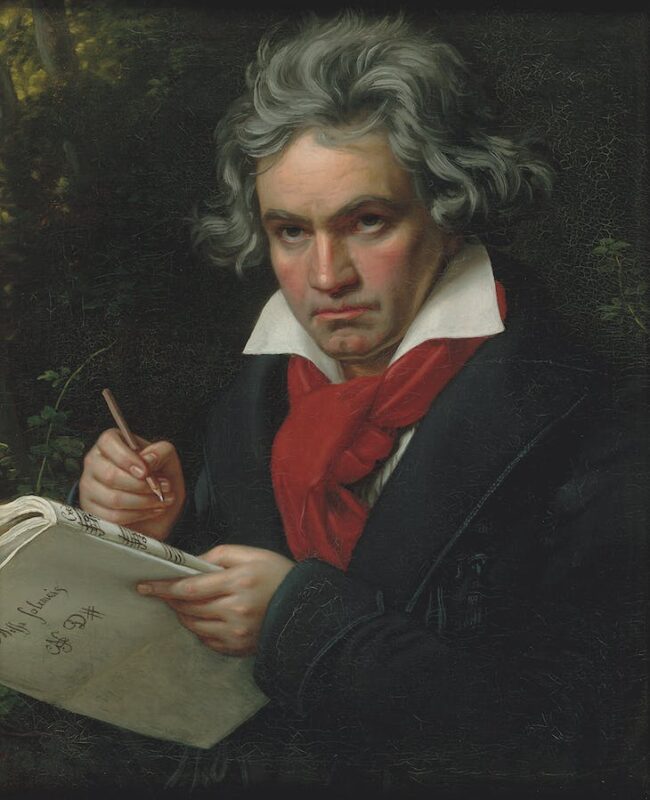Unfortunate for us, we do not have a photograph of the famous composer. He just missed out on this wonderful invention. We must be content with the paintings that were made of him. The most famous of them all is the one by Joseph Karl Stieler. This article discovers the origin and fate of this famous portrait.
Joseph Karl Stieler, the painter who tamed the Beast
Beethoven was always on the go. Not ideal subject for portrait sitting! He could sit at his piano for hours and even days under the spell of his Muse, but that is a different matter. Accordingly, he did not tolerate painters around him and posing in one place was out of the question.
In the spring of 1820, Beethoven was more troubled than usual, nothing went as they should have. To add to the annoyances, a young painter appeared in his doorway who wanted to make a portrait of him. The young man was Joseph Karl Stieler. The rest is indeed history….
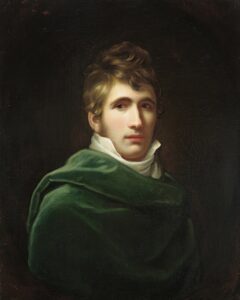
Joseph Karl Stieler (1 November 1781 – 9 April 1858) was a German painter born in Mainz to a family of artists. Initially, his father taught the boy, but due to his early death, Joseph Karl self-trained himself and completed his basic education in visual arts. From 1802 to 1805 he studied at the Academy of Fine Arts in Vienna. After his studies he toured Paris, Frankfurt and Italy. From 1812 he worked in the court of King Maximilian I. of Bavaria.
The young painter quickly achieved fame and became very well known in important circles. People loved his paintings very much, maybe because he always displayed his subjects in a more beautiful, idealized way. His work was well recognized, when he was asked to paint a portrait of Emperor Francis I. of Austria, in 1816. During his lifetime he painted many famous and influential people, such as Goethe or Alexander von Humboldt. His outstanding legacy is the Gallery of Beauties, in which he painted 36 ladies – carefully selected by King Ludwig I. of Bavaria.
In 1820, between February and April, he made a portrait of Beethoven, the most important and memorable portrait of the composer.
Stieler’s Beethoven portrait
Legend has it that Stieler was the only painter for whom Beethoven was willing to sit model with relative patience. The planned four meetings were not enough and later Stieler had to paint his hands from memory.
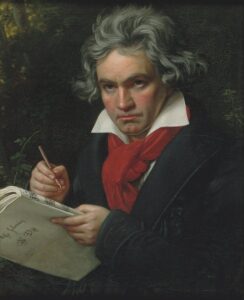 Beethoven in the picture might be sitting, holding a manuscript and a pencil. The manuscript is nothing less than the Missa solemnis in D♯, Beethoven’s famous and greatest religious work. He tilts his head forward and his gaze passes the viewer. The composer is in the moment of creation, his thoughts wander, he is only present in body.
Beethoven in the picture might be sitting, holding a manuscript and a pencil. The manuscript is nothing less than the Missa solemnis in D♯, Beethoven’s famous and greatest religious work. He tilts his head forward and his gaze passes the viewer. The composer is in the moment of creation, his thoughts wander, he is only present in body.
Stieler, true to his habit, beautified the subject’s appearance. The forever messy Beethoven can be seen here with his hair arranged, face shaved, wearing a clean and tidy dress. Around the neck the iconic red scarf.
The painting has been the most popular Beethoven portrait, ever since! It goes beyond the composer and it is not only a Beethoven, but it has also become the symbol of the human genius itself!
The history of Stieler’s Beethoven portrait
The painting was owned first by the Academy of Fine Arts in Vienna, and later it was purchased by Wilhelm Spohr, the brother of the composer Louis Spohr. At the time of Wilhelm’s death (1860), his daughter Rosalie inherited the painting, who herself was a musician, a famous harpist.
The story of the painting does not stop here! In 1909, Henri Hinrichsen director and owner of the renowned C.F. Peters
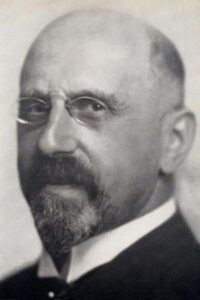
music publisher, buys the portrait and keeps it as a jewel in his office. He also makes a couple of copies, which he gives to his friends. One such gifted was Max Reger, who collected relics from famous composers and, according to the story, had a splinter from Beethoven’s coffin.
Although Hinrichsen (of Jewish descent) was highly esteemed in his hometown Leipzig, the rise of Hitler and Nazism reached him as well. In 1938, Nazi looters broke into his home and office on the Kristallnacht, confiscating his valuables and nationalizing his music publisher company (it was ‘aryanised’ – as they used to say). Henri Hinrichsen later died in the gas chambers of Auschwitz.
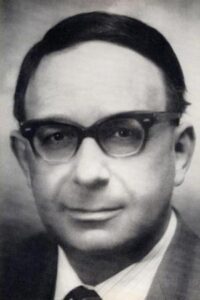
Imagine what Beethoven would have said if he knew that one day Stieler’s portrait of him would be a precious treasure of Nazi Germany, the realm of barbarism and moral darkness! Maybe Beethoven’s spirit also helped keeping the story from ending here!
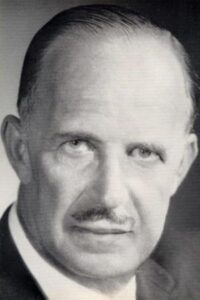
Henri Hinrichsen’s sons, Max and Walter, fortunately emigrated to London and America before the war and founded the C.F. Peters both in London and in New York. After the war they returned with the winning American troops, Walter as US Music Officer (aiming to save and recollect stollen art from Nazis). During his visit to Leipzig, for a short time he had regained his father’s company, but lost it again when the city was occupied by the Red Army and the German Democratic Republic was established. C.F. Peters was lost again, this time to be the publisher of the communist state.
By a series of intricate bargains, Max could take away part of his father’s collection, bringing the famous Beethoven painting back to the family, this time to New York.
In 1981, the Beethoven-Haus of Bonn buys the painting and thus the long odyssey comes to an end. Now, it is in the house where (at the time of writing this article) 250 years ago, at Bonngasse 20., the great Ludwig van Beethoven first opened his eyes!
